The content of the article
A clean and well-kept bath is the hallmark of a good hostess. But if the bathtub is covered with lime stains and yellow stains - it becomes clear that it has not been cleaned for a long time. But what if yellow marks appeared on the white surface of the bath? How to remove them, if the usual "Chistol" does not help? In this article, you will learn why yellow marks and calcareous spots appear on the surface of the bath, as well as learn about the most effective ways to remove them.
Why spots and stains appear on the surface of the bath
Indeed, why do some have a bathtub that shines with whiteness, although it was installed more than a dozen years ago, while others have a relatively new bathtub already full of smudges and yellow spots? This may not always be the result of insufficient care.
- Very often, yellow spots appear due to poor water quality. As a rule, smudges are most often visible where water flows - that is, at the level of the tap. This happens if the water contains a high chlorine content. A certain composition of salts is often added to the water, which allows it to not cool for a long time, which is important for centralized hot water supply. That is why hot water is considered technical - it can not be eaten. But for the same reason, traces of yellow smudges appear on the surface of the bathtub.
- If there are a lot of calcium and magnesium salts in the water, calcareous formations and a clear coating appear on the surface of the bath. This is most often observed in regions with very hard water.
- Sometimes smudges have a characteristic not just yellow, but a rusty hue. This is due to the fact that there is a lot of iron and particles of corrosion in the water. This can be observed in houses with old pipes and rusty water systems.
- An important role is played by the care of the bathroom. If you clean the surface of the plumbing regularly, you can get rid of any stains and pollution at the initial stage of its development. If cleaning is rare, the stain eats into the structure of the material and removing it becomes more difficult.
- Another reason for the rapid pollution of the bath and the formation of yellow plaque is improper and illiterate care. How often do housewives start frantically rubbing a new acrylic bathtub with hard brushes to clean it of the slightest pollution. And make a big mistake. A material such as acrylic is quite sensitive to various abrasive particles and is easily scratched. After such a furious cleaning, grooves appear on the surface of the bathtub, in which dirt and plaque get stuck even more actively. This leads to the fact that the bath is worse cleaned, yellow spots appear faster, the bath looks unpresentable. Therefore, improper care can also be considered one of the main causes of contamination of the bath.
Summarizing the above, it can be noted that poor water quality, rust in pipes, improper, as well as insufficient care of the surface of the material can lead to contamination of the bath. To get rid of yellow smudges and stains, you need to consider the material of the bath.
How to clean a bath depending on its material
Do not use the same product to clean all surfaces. At best, it can just be ineffective, at worst it will ruin sensitive material. Here are the main types of bathtubs, as well as effective means for cleansing them of yellow plaque.
Acrylic
To date, acrylic baths are considered the most popular and in demand. This is due to the large number of positive qualities of this material. Firstly, the acrylic bathtub is lightweight - it is very convenient during transportation.Secondly, the acrylic bath does not rust. Thirdly, acrylic is considered a sanitary material - a fungus does not develop on its surface. In addition, any form of bathtub that suits the design of your room can be made from acrylic. For the sake of justice, I would like to note the shortcomings of this material. Acrylic is quite fragile and easy to scratch. In order for the acrylic bath to withstand water and the weight of a person, it must be correctly installed. Acrylic is a thin material, so the water in the bath cools quickly. This problem can also be solved by proper installation and proper thermal insulation.
It is not difficult to look after an acrylic bathtub. If every day you simply rinse the surface of the bathtub with shower water, you are not afraid of any pollution - the stains simply do not stay on a smooth surface. Acrylic can not be cleaned with brushes, tin sponges, cleaning products with abrasive particles, etc. Among the cleaning products with which you can clean the yellow marks on an acrylic bath, you can highlight cream "Sif", "Triton", "PaniVanna." If you are not sure that the product is safe for the surface, apply a small amount on the edge of the bath. If after 10 minutes there are no defects, you can clean the entire surface of the bath.
It is safe to clean the acrylic bath with lemon juice. Dissolve the juice of one lemon in a glass of warm water. Take a soft sponge and wipe the surface of the bath with this composition. In no case do not use acetone, kerosene or other aggressive substances to clean acrylic - they corrode this material.
Cast iron
Cast-iron bathtubs do not give up their positions - they are as popular as they were 50 years ago. This is not surprising, cast iron is a strong and reliable material, the water in it cools very slowly, which allows you to enjoy water procedures for a long time. Cast-iron bathtubs are very durable, it has been tested for more than a dozen years. Unlike an acrylic bathtub, cast iron does not resonate with the jet and does not make such loud sounds that are heard throughout the house during water collection. The disadvantage of a cast-iron bath is its surface. Over time, the enamel cracks, becomes cloudy, and may become stained, which are difficult to remove. However, this is a completely solvable problem - today it is not difficult to update a cast-iron bathtub, covering it with new enamel. However, the new coating should be handled with care - any impact may result in chipping or cracking.
If the bath is not covered with additional enamel, it can be cleaned by any means, since its natural layer is burned at very high temperatures and is not afraid of various influences. Cast iron bathtubs are perfectly cleaned with various powders based on soda ash, for example, Pemolux, Biolan. Comets, etc.
At home, you can use the most ordinary baking soda. Mix it with laundry soap, grated, and clean the surface of the cast-iron bath with the cooked mass. Be sure to wear gloves so that the composition does not corrode the skin.
Steel
Another type of popular bathtubs is steel. Like acrylic, steel baths quickly cool down and make noise when water is drawn, however, these shortcomings are easily removed by proper installation of the product. Steel baths are short-lived - with improper care they begin to become corroded. Steel bathtubs are easy to transport and install - they weigh a little. A bathtub is cheaper than its acrylic and cast-iron counterparts, so steel is an excellent solution for temporary use.
The surface of the steel is coated with special enamel, which is quite sensitive to various powders, brushes and abrasive particles. In addition, the steel bath cannot be cleaned with alkaline or acidic compounds. For cleaning, only gentle pastes, creams and gels should be used, on the packaging of which there is a list of materials to which the product is applicable.
From home remedies, ammonia and hydrogen peroxide will help.Mix the two ingredients in equal proportions and apply on the yellow old spots. Leave for a while, and then rinse with a flannel rag - there will be no trace of spots.
These are the main types of materials from which modern bathtubs are made. For each of them, you can choose a professional cleaning composition that will eliminate yellow spots and limescale. But if there are no special cleaners at hand - do not despair, you can clean the bath with what you have at home.
How to clean the bath with improvised means
Here are recipes to help cleanse your bath of yellow spots quickly and safely.
- Dry bleach. This is a powder that is used to whiten fabrics and various surfaces. It must be diluted with water so that gruel is obtained. Apply the composition to the yellow spot and leave for a while. After 10-15 minutes, rinse the surface of the bathtub with warm water. This product is especially effective for steel and cast-iron bathtubs (without re-coating).
- Apple cider vinegar and citric acid. This is a delicate but effective tool for cleaning the acrylic surface of the bath. Mix apple cider vinegar with lemon juice or citric acid and pour the mixture into a spray bottle. Spray the composition on the surface of the bath and leave for 15 minutes.
- Lemon. Any stain of a small size can be removed with an ordinary lemon. Cut the citrus in half and lightly salt the slice. This will allow the juice to come out and give the desired reaction. Just wipe the surface of the bath with juice or attach the fruit to the stain with a slice. Leave on for 15 minutes, the stain will simply dissolve.
- Wine vinegar and salt. Vinegar should be slightly warmed up to be more effective. In a glass of warm vinegar, dissolve two tablespoons of table salt and moisten the yellow spots with the prepared composition. After 20 minutes, rinse with a soft sponge and plenty of water.
- Soda and hydrogen peroxide. To clean stubborn and hard to remove stains, you can use soda and hydrogen peroxide. Mix the two ingredients to make a slurry. Using a brush, gently apply the mixture to the stain and leave for several hours. This composition will help to remove even the most difficult spots and pollution.
If all these remedies do not help to remove the stain, most likely, it is ingrained into the structure of the material very deeply. The only solution in this case is the restoration of the bath and covering it with a new layer of acrylic, enamel or other material.
To ensure that the bathtub is always clean and snow-white, you need to properly care for it. Clean the bath regularly; any dirt is easier to remove if fresh. Do not use brushes, abrasive cleaning powders, metal objects for cleaning, aggressive acids. All this will only worsen the quality of your bath and contribute to the appearance of even more serious cracks and dark spots. Linens cannot be soaked in an acrylic bath - the powder contains special substances that corrode the material after prolonged contact. If possible, wipe the bath dry so as not to leave it wet. And then the product will last you more than a dozen years and will look well-groomed.
Video: how to clean the bath to a snow-white state





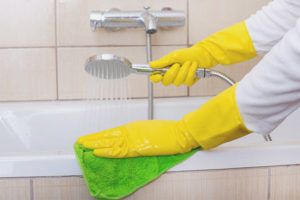
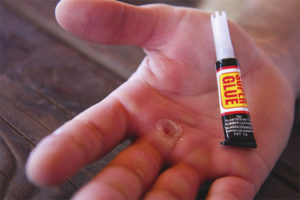
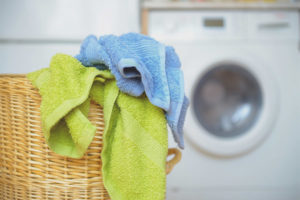
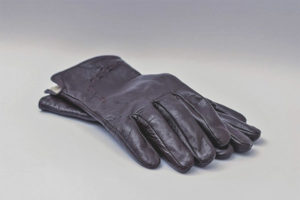


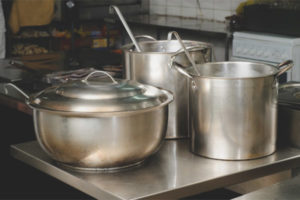
Submit